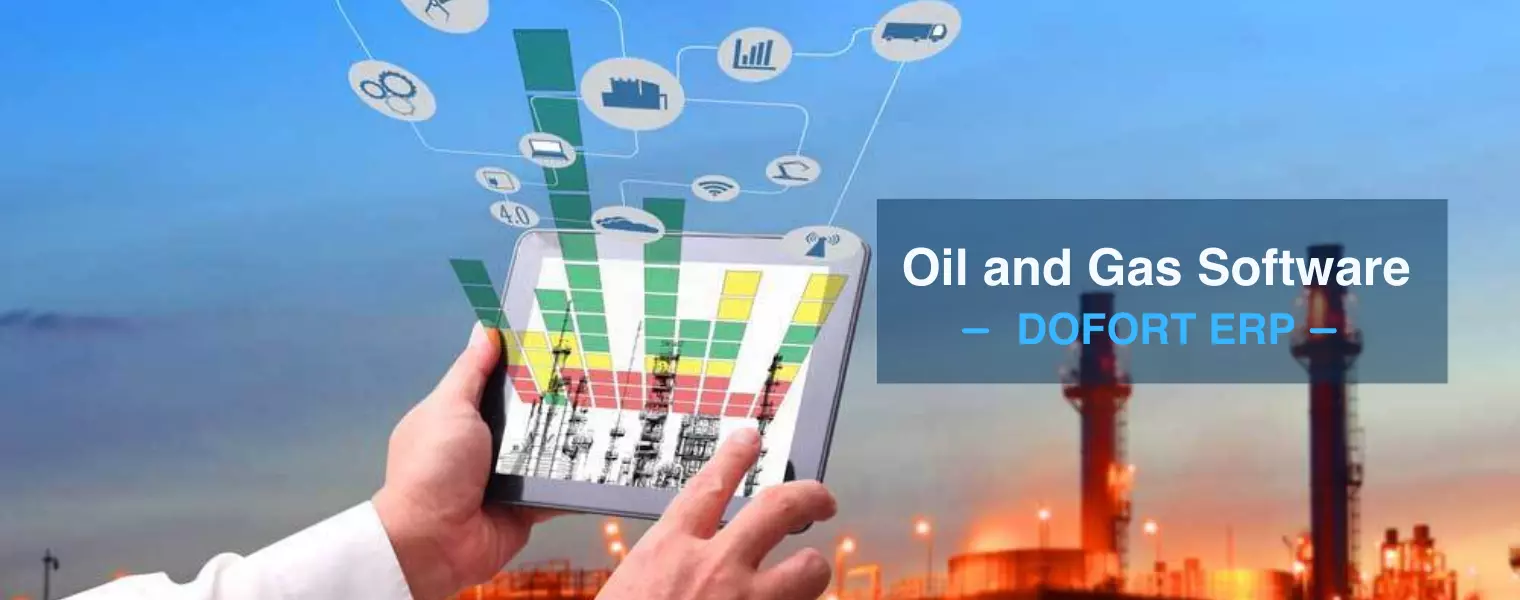
When it comes to maintaining onshore and offshore infrastructure, oil and gas businesses confront a range of issues, ranging from safety concerns to expensive installation and operating costs. You need a solution that covers all important functions for onshore assets. Offshore constructions can be protected by using a tried-and-true technique. You need to handle all of the information on a single platform to get the full value out of an asset throughout its existence.
You can lower your costs, reduce your risk, and increase your performance with the aid of our Oil and Gas Software. Project managers can plan, implement, manage, monitor, and assess the whole asset lifespan, from operations to gas distribution, using our software solutions.
The industry is addressing the oil and gas ERP software solution for providing real-time operations management in order to improve the business operational efficiency of oil and gas assets. Production monitoring, drilling management, equipment management, loss management, and a variety of other service operations are just a few of them.
In the oil and gas industry, an ERP system is critical for standardizing corporate processes. This is especially important given the oil and gas industry's massive geographically dispersed units, complex supply chain demands, and increased competitiveness. DoFort oil and gas ERP software system includes all of the necessary tools for restructuring these tasks. However, the goal of business uniformity isn't just to save money; it's to provide a viable benefit and flexibility to the company by enabling for speedy entry into the global market and changes in office workload.
Oil and Gas industry is a costly business. And an oil and gas ERP system is an important aspect of the industry's development and improvement of oil and gas production and management. The following are some of the major benefits of using an ERP software solution in the oil and gas industry. ERP, or Enterprise Resource Planning, is a type of management software that is used to plan, manage, and automate all of an organization's fundamental functions, such as supply chain, services, payroll, and monitoring. ERP software can be used to streamline business processes and keep track of important papers and data. This allows users to access information at any time and from any location, and ERP software may manage and analyse metrics across functions, as well as generate reports based on jobs or individual user decisions.
In terms of schedules and expenses, oil and gas ERP software is designed to readily integrate with other third-party applications. Such a solution aids in the efficient management of a company's resources and overall financial structure. As a result, the organization is constantly in a better position to fulfill deadlines and generate productivity.
Companies that incorporate ERP solutions can readily identify possible project risks well ahead of time. As a result, they can forecast whether or not a project will succeed.. Furthermore, firms can use ERP software to create contingency plans as needed.
Companies can also use an oil and gas ERP software solution to efficiently manage the various components of their offshore and onshore projects. Product procurement, inter-departmental communication, financing, project deadlines, and resources are just a few examples. Effective project management, in the end, aids businesses in completing projects on schedule and within budget.
The oil, gas, and energy producing industries rely heavily on international initiatives and joint ventures. This industry may maintain track of different business aspects such as currency exchange, financial management, local technical assistance, and compliance with international legislation using strong ERP software.
Major hurdles confront oil and gas companies, including operational safety, regulatory compliance, market volatility, environmental, financial, and personnel risks. DoFort is the best oil and gas software for controlling these risks faster, easier, and smarter. It's a tried-and-true solution with bespoke configurations to match your specific requirements. Oil and gas inspections follow normal government rules aimed at keeping oil well sites and facilities safe and equipment working smoothly. You must keep up with inspections whether you are using visual inspections, ultrasonic methods, or radiography. Automate the development of work orders for each inspection of each piece of equipment and for every sort of inspection to ensure that you never miss an inspection and that you have all of the information you need for reporting.
In the oil and gas industry, there is a pressing need for inspection, as well as different software programmes for reviewing and identifying finds. Software requirements specifications and test plans are frequent in inspection software. There is a staff in the organization that reviews the operation management and gathers data for revision using inspection software. Many oil and gas organizations benefit from outsourcing companies that are well-known in this industry, such as DoFort, which provides help from its highly skilled crew. DoFort has creative ideas for oil and gas inspection software that helps with planning, execution, recording, mistake tracking, and follow-up measures.
DoFort provides the best Oil and Gas Software for oil and gas industry. We offers a variety of Oil inspection software, including Drops inspection, Lifting inspection, NDT inspection, and Tubular inspection, which can help save time, manage compliance, and decrease human effort by automating inspection-related operations.
Welcome to DoFort !